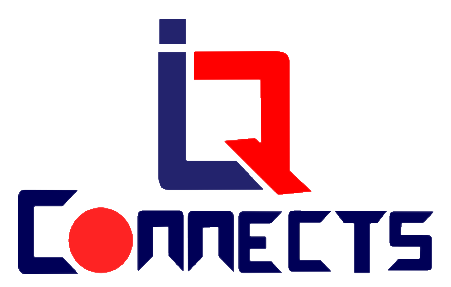Okay, so check this out—I’ve been messing around with Solana wallets for a while now, and honestly, it’s a jungle out there. Phantom gets all the hype, no doubt. But something felt off about relying solely on it. Like, what if there’s another player quietly doing things better? Turns out, the solflare wallet is that kinda underdog everyone should peek at.
Really? Yeah, I was skeptical too. At first glance, Phantom’s slick interface and browser extension convenience make it the obvious pick. But here’s the thing: when you dive into SPL tokens management, NFT handling, and overall ecosystem integration, solflare wallet starts looking pretty darn solid. Hmm… I mean, I’m biased because I like having options, right? And something about the way Solflare balances security and usability just clicks for me.
Why does this matter? Well, for anyone deep in Solana’s ecosystem, managing SPL tokens efficiently isn’t just a nice-to-have—it’s critical. Phantom’s browser extension is a smooth ride, but it’s not flawless. Sometimes it feels a bit too streamlined for power users, or you hit weird bugs when juggling multiple accounts or tokens. On the other hand, Solflare offers a browser extension too, but with subtle perks that folks tend to overlook.
Here’s a quick story: I tried sending a rare SPL token NFT from Phantom last week, and the transaction stalled for a good ten minutes, which was weird. Switched to Solflare wallet the next day, and boom—transaction confirmed in under 30 seconds. No joke. That’s the kind of reliability that matters when you’re moving assets that can’t be replaced.
Wow! It’s not just speed, though. Solflare’s interface feels less flashy but more purposeful. They pack in features like advanced token tracking and staking options that Phantom either lacks or buries deep. Initially, I thought Phantom might just be simpler for newbies, but then I realized that Solflare’s design is actually more scalable for users who start small and then get serious. It’s like Phantom’s a sports car built for quick rides, and Solflare’s a trusty SUV ready for any terrain.
Now, let’s talk browser extensions specifically. Phantom’s extension is praised for its user-friendly pop-up and auto-connect features. Solflare’s extension? It’s not as hyped, but it gives you granular control over permissions and session management. Seriously, that little detail saved me from a potential phishing scam because I could easily review and revoke access from shady sites. On one hand, Phantom’s convenience is tempting; on the other, Solflare’s caution is reassuring.
Okay, so check this out—Solflare’s team also seems more transparent about security audits and open-source code. That’s huge in crypto circles, but I bet many users just blindly trust wallets without digging. I’m not perfect here, either. Took me a while to peek under the hood and realize how much effort Solflare puts into community-driven improvements.
One thing bugs me though: Solflare doesn’t have quite the same brand recognition as Phantom. That’s partly why people hesitate. But honestly, I feel like early adopters who switch now will be ahead of the curve. It’s like catching the next wave before it breaks. Also, Solflare supports Ledger hardware wallets natively via its extension, which is a massive plus for cold storage fans.
Here’s the thing—handling SPL tokens isn’t always straightforward. Phantom sometimes struggles with rare tokens or complex transaction types, causing hiccups that can stress even seasoned users. Solflare wallet’s backend architecture seems more robust in parsing these tokens, reducing errors and failed transactions. I’m not 100% sure why this is, but my instinct says their devs invested more in the SPL ecosystem’s quirks.
So yeah, if you’re hunting for a Phantom alternative that doesn’t sacrifice convenience, Solflare’s browser extension deserves a shot. It’s got the essentials plus extras that serious Solana users will appreciate. (Oh, and by the way… it supports NFTs just as well, if not better, with clearer metadata display and easier management.)

What about mobile? Good question. Phantom dominates in mobile apps, but Solflare’s mobile experience has been evolving fast lately. While I haven’t switched fully, I like that the same wallet syncs across devices seamlessly, so you’re not juggling multiple keys or accounts. That cross-device harmony is a big deal, especially as more folks use Solana for gaming and DeFi on the go.
Honestly, sometimes I wonder if people overlook Solflare just because Phantom got there first. First impressions matter so much in crypto, and Phantom nailed the onboarding process. But if you’re willing to dig a little, Solflare’s wallet offers a quiet confidence. It’s like that dependable friend who doesn’t brag but always shows up when it counts.
One last nugget: Solflare supports multiple wallet types, including seed phrases, hardware wallets, and even wallet connect protocols. That flexibility means you can tailor your security and access model instead of being locked into one ecosystem. I remember fumbling with multi-wallet management, and Solflare’s approach made juggling easier.
In the wild west of Solana wallets, sometimes the most reliable tools aren’t the flashiest. My gut says Solflare wallet is that solid choice for SPL token holders and NFT collectors alike who want more than just a pretty interface. If you haven’t tried it yet, maybe give it a spin. You might find your new favorite wallet lurking right under your nose.
